Test Partnership publishes various psychometric and personality tests for many companies worldwide. You can encounter Test Partnership assessments when applying for high-demand positions at a highly competitive level.
Let's find out what kind of assessments the test provider has and how you can best prepare for your upcoming Test Partnership assessment!
Table of Contents
About Test Partnership
Test Partnership is a UK-based psychometric assessment company that specializes in filtering potential candidates for companies and organizations worldwide. They specifically provide tests for high-demand positions such as pilots and investment analysts at both SMEs and companies of global scope.
Test Partnership assessments are considered one of the most challenging pre-employing tests. They are often of medium to great difficulty that requires a thorough understanding of test questions and test structures to perform well.
Test Partnership aptitude assessments
Test Partnership aptitude assessments consist of a package of tests that assess candidates on a number of aptitude areas. These include
- Numerical Reasoning
- Verbal Reasoning
- Inductive Reasoning
- Critical Thinking
- Data Analysis
- Mechanical Reasoning
- Bespoke
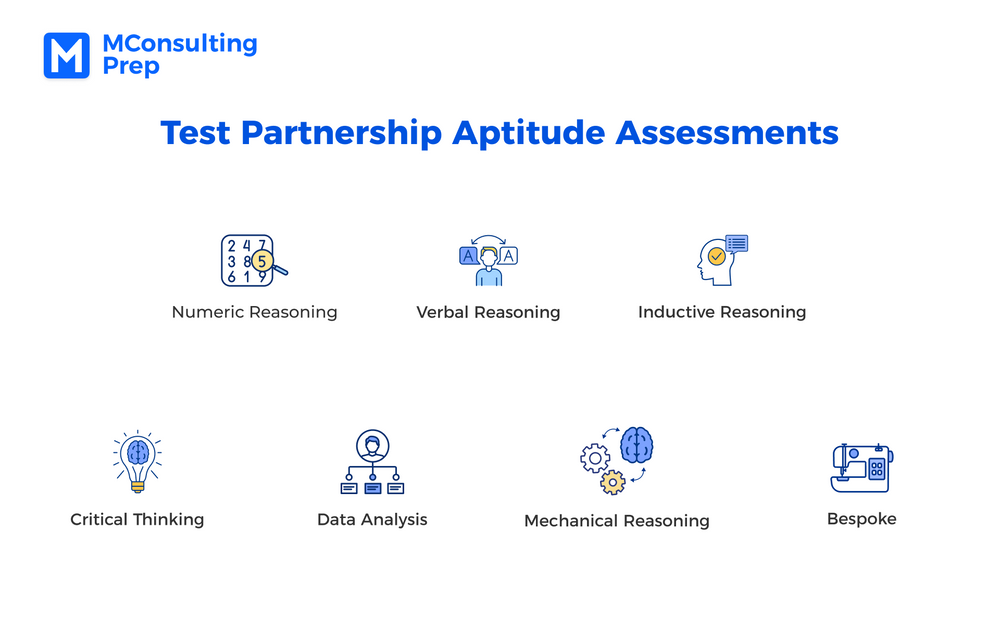
Insights™ numerical reasoning
Insights™ numerical reasoning is dedicated to assessing candidates' ability to solve numerical problems, understand math principles, and comprehend workplace-relevant knowledge in quantitive fields at any level.
Test takers may encounter questions about data interpretation that require them to work with presented graphs to answer a couple of calculus questions.
The Test Partnership Insights™ numerical reasoning test allows the use of calculators and draft papers, and therefore you can focus on working out the calculations rather than the calculation itself.
It is a 15-minute test with 15 questions, and you have 60 seconds sharply to solve each question. These 15 questions will be delivered at various difficulty levels in the real test. It also depends on the ability level of each candidate that these difficulty levels differ among candidates. High-performing candidates automatically get extensively difficult questions and low-performing candidates automatically get easier questions.
Here’s a sample question to take a look at.
 Source: Test Partnership
Source: Test Partnership
Answer: F
Explanation:
The amount average annual revenue decreased from 2008 to 2009 is: 56.7 - 53.7 = $ 3 billion
The percent average annual revenue decreased from 2008 to 2009 is: 3 x 100%/56.7 = 5.29%
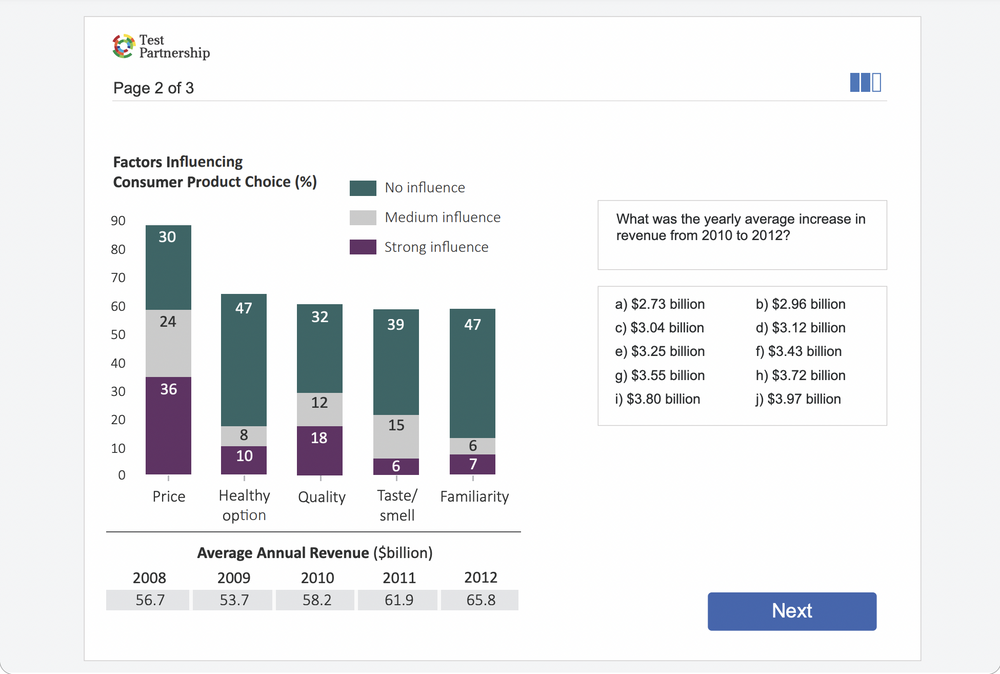
Source: Test Partnership
Answer: I
Explanation:
The amount of revenue increased from 2010 to 2012 is: 65.8 - 58.2 = $ 7.6 billion
The yearly average increase in revenue from 2010 to 2012 is: 7.6/2 = $ 3.8 billion
Insights™ verbal reasoning test
Insights™ verbal reasoning test aims at assessing candidates’ ability to understand, evaluate, and interpret written and spoken information in workplace-relevant contexts at various levels.
It is a 15-minute test with 20 questions and on average, you have less than 1 minute to work on each question. These 20 questions will be delivered at various difficulty levels. Each question in the test begins with a statement of facts that is true by default.
Following the statement, there are a number of possible inferences - conclusions that can be drawn from the previous statement. Your job is to determine each inference’s level of truth or falsity. The five degrees are as follows:
- Definitely True
- Probably True
- Insufficient information
- Probably False
- Definitely False
Here are some examples for you.
Example:
The Thames Tideway Tunnel (TTT), at an estimated cost of £4.2 billion, has the goal of increasing the capacity of London’s existing brick Victorian sewage system to meet the strains it faces today. The TTT will collect and store the regular overflow of almost 40 million tonnes of rainwater and sewage each year, before pumping it to a water treatment plant outside London. Some of the sewage will be used to generate a moderate amount of methane gas; a renewable form of energy. The 9-year project has been scrutinized for failing to consider cheaper and other environmentally beneficial alternatives, such as resurfacing roads with porous asphalt, repurposing walls and roof space for gardens, and segregating rainwater from untreated sewage.
Source: Test Partnership
Question 1: The Thames Tideway project is expected to cost £4.2 billion.
1) Definitely True
2) Probably True
3) Insufficient Information
4) Probably False
5) Definitely False
Answer: Definitely True
Explanation:
In the passage, it is stated that “The Thames Tideway Tunnel (TTT), at an estimated cost of £4.2 billion[...]”, therefore, we can understand that £4.2 billion is the expected cost of the Thames Tideway Tunnel.
Question 2: Rooftop gardens could be used for growing fruit and vegetables.
1) Definitely True
2) Probably True
3) Insufficient Information
4) Probably False
5) Definitely False
Answer: Probably True
Explanation:
In the passage, it is mentioned that the roof space will be repurposed for garden, therefore, it is possible that it will be a place where fruit and vegetables are planted. However, it is something we can refer from the passage through a piece of information. Therefore, it is only Probably True.
Question 3: More rainwater than sewage is processed at the water treatment plants.
1) Definitely True
2) Probably True
3) Insufficient Information
4) Probably False
5) Definitely False
Answer: Insufficient Information
Explanation:
The passage only mentioned separating rainwater from untreated sewage, there is no information about the water treatment plants as well as the porportion between different water being processed.
Insights™ inductive reasoning test
Insights™ inductive reasoning test is designed to assess candidates’ ability to work out abstract problems, understand logical patterns, and identify outside-the-box solutions at various levels.
The real inductive reasoning test contains 16 questions and you will have sharply 40 seconds to find the answer to each question. In each question, there is a series of shapes and you have to predict what shape comes next and choose accordingly from 5 different given options. As you proceed, the difficulty level will increase gradually.
Here are some examples.

Source: Test Partnership
Answer: B
Explanation:
Elements:
There is one element: crosshair with two versions.
Rules:
The elements follow two rules: alternation and rotation.
1. The series alternates between two versions of crosshair.
2. Each crosshair rotates 15 degrees counter-clockwise each time.
Then the missing answer is B.
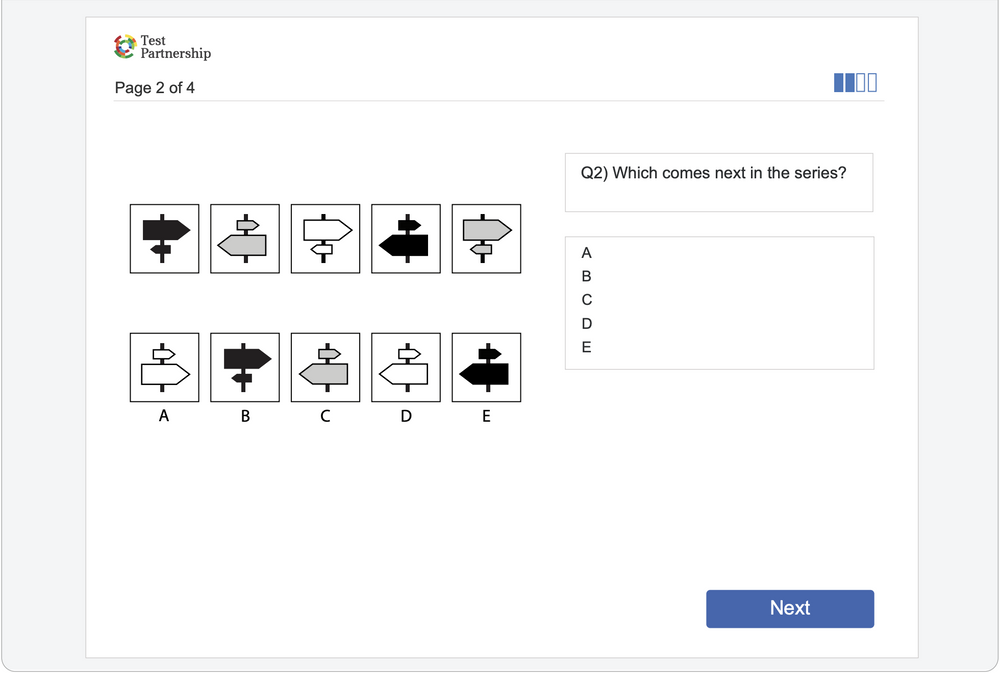
Source: Test Partnership
Answer: D
Explanation:
Elements:
There is one element: signpost icon.
Rules:
The element follows one rule: alternation.
1. The color of signpost icons alternates between black, gray and white.
2. The direction of signpost icons alternates between left and right each time.
Then the missing answer is D.
Concepts™ critical thinking test
Concepts™ critical thinking test helps assess candidates’ ability to conceptualize, apply, analyze, and evaluate complex written information to arrive at an in-depth conclusion at various levels. The real test will have 24 questions of varying difficulty.
Here are some question samples of slightly easier levels.
Question 1:
The Thames Tideway Tunnel (TTT), at an estimated cost of £4.2 billion, has the goal to increase the capacity of London’s existing brick Victorian sewage system to meet the strains it faces today. The TTT will collect and store the regular overflow of almost 40 million tonnes of rainwater and sewage each year, before pumping it to a water treatment plant outside London. Some of the sewage will be used to generate a moderate amount of methane gas; a renewable form of energy. The 9-year project has been scrutinized for failing to consider cheaper and other environmentally beneficial alternatives, such as resurfacing roads with porous asphalt, repurposing walls and roof space for gardens, and segregating rainwater from untreated sewage.
Source: Test Partnership
The Thames Tideway project is expected to cost £4.2 billion.
1) Definitely True
2) Probably True
3) Insufficient Information
4) Probably False
5) Definitely False
Answer: Definitely true
Explanation:
It is stated in the passage that “The Thames Tideway Tunnel (TTT), at an estimated cost of £4.2 billion” - “estimated cost” is similar to “expected to cost”.
Question 2:
The Red Bus stops every 10 minutes.
The Green Bus stops every 20 minutes.
Both buses stop at Lansdowne Road.
The Red Bus has twice as many stops as the Green Bus.
Source: Test Partnership
The two buses never stop at Lansdowne Road at the same time.
1) True
2) Insufficient Data
3) False
Answer: 2) Insufficient Data
Explanation:
There are other factors (starting time, etc.) that could affect whether the two buses stop at the same time at Lansdowne Road. These factors are not mentioned, so we can not reach the conclusion. ⇒ Insufficient data.
Concepts™ data analysis test
Concepts™ data analysis test assesses candidates' ability to solve numerical problems, understand math principles, and analyze complicated workplace-relevant quantitive data at various levels.
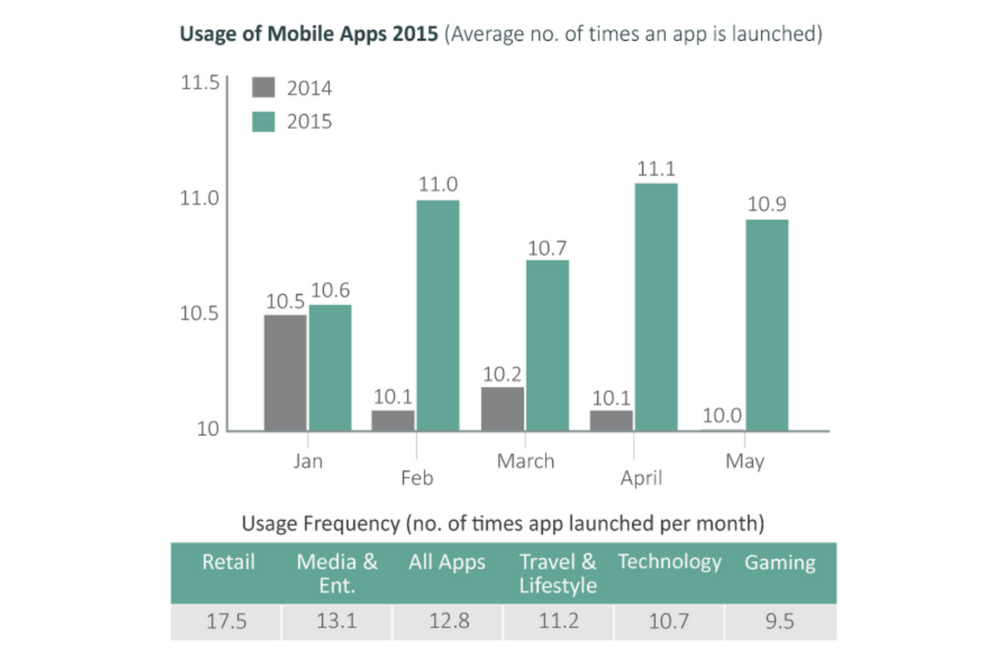
Source: Test Partnership
Question 1: On average, how many times would a Gaming App be launched over a six-month period?
a) 51
b) 52
c) 53
d) 54
e) 55
f) 56
g) 57
h) 58
i) 59
j) 60
Answer: G
Explanation:
The number of times a Gaming App would be launched over a six-month period is: 9.5 x 6 = 57
Therefore, the correct number is G.
Question 2: What was the percentage change in the total number of App launches in Feb 2014 compared to Feb 2015?
a) 8.1%
b) 8.2%
c) 8.3%
d) 8.4%
e) 8.5%
f) 8.6%
g) 8.7%
h) 8.8%
i) 8.9%
j) 9.0%
Answer: I
Explanation:
The percentage change in the total number of App launches in Feb 2014 compared to Feb 2015 is: (11.0 - 10.1) x 100%/10.1 = 8.9%
Therefore, the correct number is I.
Mechanical reasoning test
This mechanical reasoning test is designed to assess candidates’ ability to apply mechanical and physical principles to specific systems and processes. The real test consists of 24 questions of various difficulty levels. Test-takers will have a sharp time allowance of 50 seconds for each question.
Like the numerical reasoning test, High-performing candidates automatically get extensively difficult questions and low-performing candidates automatically get easier questions.
Bespoke
Unlike other assessments that are delivered by Test Partnership, the Bespoke is only available on request and it is designed from the outset to meet the needs of the commissioning organization.
Other Test Partnership assessments
Alongside the aptitude packages, Test Partnership also provides a number of other different assessments. These assessments include
- MindmetriQ™ Gamified Assessments
- Perceptions™ Situational Judgement Test
- Personality Test
MindmetriQ™ gamified assessments
MindmetriQ™ gamified assessments are dedicated to predicting job performance based on serious science. The test is built from established research and cutting-edge technology that help businesses and companies select the most suitable candidates.
In this assessment, there will be a set of different interactive games to evaluate different screening areas.
Pipe Puzzle
This game is designed to assess spatial scanning, visual memory, and flexibility of closure. In this game, candidates have to re-arrange the pipes to connect the two endpoints. The rule is to avoid solid obstacles and make sure you have enough pipes for the process. The time allowance for this game is 6 minutes.

Source: Test Partnership
Shape Spinner
This game is designed to assess speeded rotation, visualization, and serial perceptual integration. The rule is you have to spin the wheel so that each symbol lies next to either the same shape or the same shading, but not both. It’s important that you check every symbol. The time allowance for this game is 4 minutes.

Source: Test Partnership
Word Logic
This game is designed to assess reading decoding, processing verbal information, and cloze reasoning (missing information). You are required to analyze verbal analogies and select the best option to finish the logical comparison. The time allowance for this game is 6 minutes.

Source: Test Partnership
Link Swipe
This game is designed to assess lexical knowledge, processing of verbal information, and grammatical sensitivity. The game presents a pair of words and you have to swipe to determine whether the pair of words are approximate synonyms, antonyms, or neither. The time allowance for this game is 4 minutes.
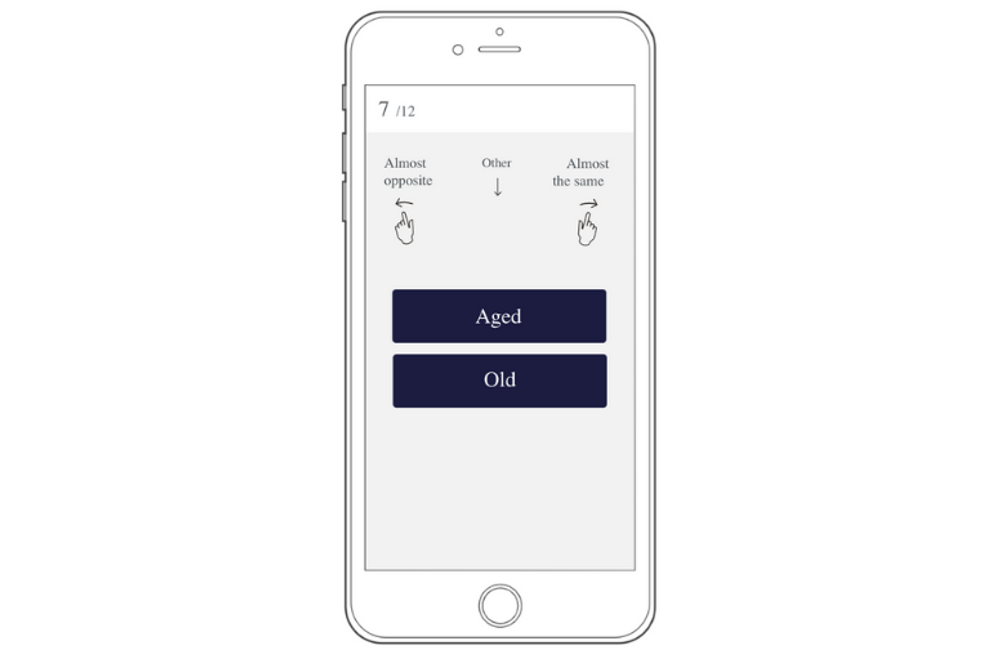
Source: Test Partnership
Net the Numbers
This game is designed to assess quantitative reasoning, working memory capacity, and visual processing. You have to drag the highlighted net over the numbers whose sum gives the largest possible answer. The highest number can be either positive or negative. The time allowance for this game is 6 minutes.
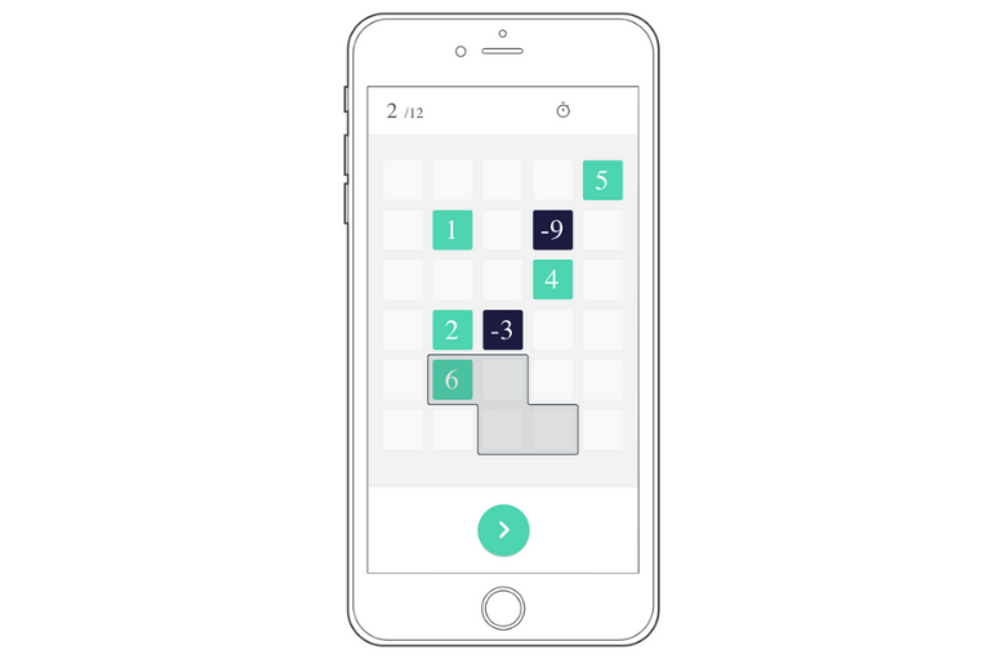
Source: Test Partnership
Number Racer
This game is designed to assess quantitative reasoning, perceptual speed, and memory span. You have to check which numbers are falling and collect numbers that can sum to the target numbers on the left sidebar. It’s important that you avoid other falling numbers. The time allowance for this game is 6 minutes.
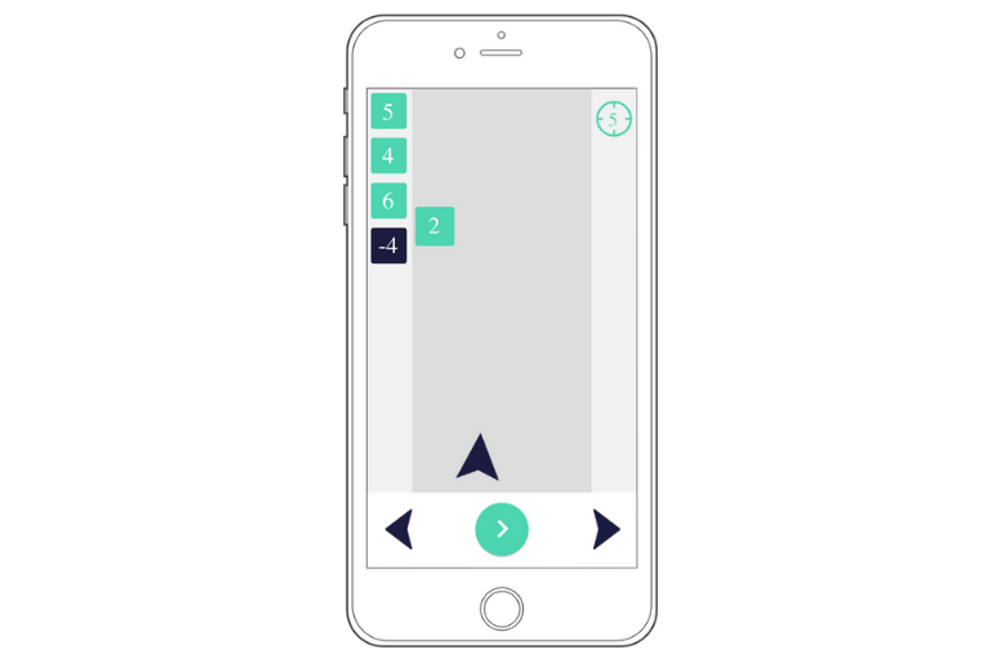
Source: Test Partnership
Perceptions™ situational judgment test
The perceptions™ Situational Judgement Test aims to assess candidates’ tendency to make effective judgments and decision-making in a wide range of workplace-relevant contexts.
The test will be presented with an overall scenario, and several potential actions following that scenario. For each given action, you must rate the effectiveness of that action in responding to that scenario. The rating scale includes the following options:
1) Very Ineffective: An action that is likely to make the situation worse.
2) Ineffective: An action that will not help the situation.
3) Fairly Ineffective: An action that is somewhat unlikely to improve the situation.
4) Fairly Effective: An action that is somewhat likely to improve the situation.
5) Effective: An action that will help the situation.
6) Very Effective: An action that will significantly improve the situation.
Personality
The Test Partnership Personality Test includes a wide range of assessments targeting the evaluation of different candidates’ personality traits.
- The TPAQ-45™ Personality Profile. This test assesses test-takers emotional intelligence, resilience, integrity, industriousness, and the Big Five personality traits. It takes around 20-25 minutes to complete the assessment.
- The TPAQ-27™ Express Personality Profile. This test assesses test-takers emotional intelligence, resilience, integrity, industriousness, and the Big Five personality traits. It takes candidates around 10-15 minutes to complete 108 questions.
- Ethos™ Behavioural Styles (L): Learning Agility. This test assesses the test-takers ability to learn and seek knowledge. It takes candidates around 20 minutes to complete this test.
- Ethos™ Behavioural Styles (S): Strengths. This test helps identify the test-takers key character strengths.
- Ethos™ Behavioural Styles (R): Remote Working. This test assesses the test-takers behavioral compatibility with remote working. It takes candidates around 10 minutes to complete this test.
Which companies use Test Partnership assessments?
There are a large number of companies and corporations using Test Partnership assessments. The list includes notable names such as Qatar Airways, Moelis & Company investment bank, Balfour Beatty, London Fire Brigade, and most of the UK fire departments.
Prepare for aptitude tests with MConsultingPrep
Discover MConsultingPrep’s Aptitude Test practicing platform with
A question bank of 1400+ aptitude questions (Numerical, Verbal & Logical)
A comprehensive explanation of every question
Evaluation and recording tools for performance reviews
With our test packages, you can practice more strategically and gain more confidence for every test question you might encounter in your future aptitude tests.
Our extensive aptitude question bank covers a large number of item variations in Aptitude Tests in the pre-employment process across different companies & businesses. With questions categorized in types, you can leverage your preparation by
Focusing on practicing questions in specific types
Improving your performance in questions that you struggle with
With evaluation tools coming in handy, you have better insights into your overall performance, what you excel at, and what you need improvements on.
You can sign up for our various mock tests here to see how our tests work.
/filters:quality(75)//case_thumb/public/1699589977462_aptitude_tests_package_4_x.png)